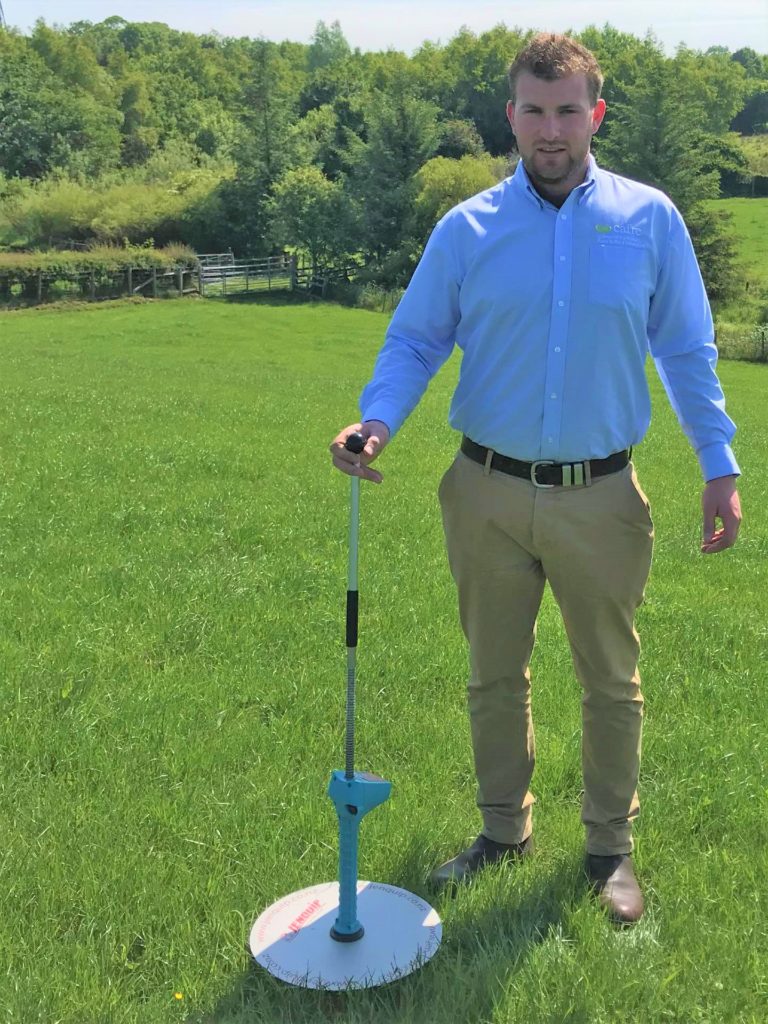Managing grass swards following drought conditions
August 2, 2021

“As grass growth is expected to improve with the recent rainfall, dairy farmers should continue to measure grass covers every 5 – 7 days and use that information to make decisions on how to optimise grass quality and levels of supplementary feeding on their farms now and later in the season” advises CAFRE Dairy Technologist Robert Patterson. The dry and hot weather conditions experienced across Northern Ireland during July increased soil moisture deficits and had a real impact on grass growth and supply on farms, especially in the East, where growth rates of 20 – 30 kg DM/ ha/ day were recorded. The return of the rain should enhance grass growth and steps now need to be taken to maximise the use of the resultant grass.
If the average farm cover was able to be maintained at or above 2,100 kg DM/ha, with a rotation length of 25 – 30 days, the recovery time of the grazing platform should be quicker. The correction of soil moisture levels should create a burst of grass growth. It will be important to manage this grass growth as on many farms the grazing wedge will have flattened as a result of the drought conditions, with a lot of paddocks carrying similar lighter grass covers. If average cover is less than 2,100 kg DM/ ha then it is important to maintain the rotation around 30 days until average cover increases. Regardless of what the average cover is, Robert emphasised that it is critical that dairy farmers measure the grazing platform weekly, if not every 5 days, to allow for adjustment of the grazing rotation.
Feeding supplementary forage as a result of the dry spell may have had a negative impact on winter fodder supplies. With the return of the rain it will be important to remove the additional forage in order to save it for the winter and also think about ways to replenish supplies for the winter.
Where supplementary forage and concentrate were increased to compensate for grass supply, it is important to reduce and remove from the cow’s diet at the correct time. If the supplement is removed from the diet too quickly, grass demand could outstrip supply and the average farm cover could drop further, meaning the grass would not have a sufficient recovery time. As a number of paddocks could have similar covers, keeping the additional supplement in the diet too long could mean grass covers could quickly become too strong and a grass surplus would be created.
Therefore Robert suggests to “remove supplementary forage and additional concentrate from the diet gradually in a stepped approach over the course of a week to allow the cow time to transition back onto a grass diet and avoid an impact on milk production”.
Robert continues “most farms have not applied any nitrogen fertiliser now in 2 weeks due to the dry weather conditions. Apply nitrogen fertiliser if 5-10mm of rain is forecast for your area. If you applied nitrogen during the dry spell, do not apply any additional nitrogen”. Remember to observe the regulations associated with the application of inorganic fertilizer as highlighted in the Nutrients Action Programme 2019 – 2022.
Extending the grazing season and keeping cows at grass for longer, will help to reduce the demand on potentially limited winter fodder stocks. The planning to extend the grazing season and indeed, preparing the grazing platform for grazing in spring 2022 starts now. August is a critical time for grazing management and many believe it is the beginning of the grass year. Robert advises that farms which are stocked at 3.5 LU/ha or above should start thinking about building up autumn grass covers from the first week of August and target an average cover of 2,350 kg DM/ha by mid-August and 2,600 kg DM/ha by early September. This can be achieved through gradually increasing rotation length through August and September whereby cows entering their final rotation of the season will be on a 45 day rotation.
Grass quality may have been reduced through the dry spell. When grass supply exceeds grass demand, the opportunity should be taken to correct paddocks in this rotation. It is important to have clean paddocks in August to start building up covers on for the autumn. Pre-mowing and identifying poorer quality paddocks to remove as bales if a grass surplus exists, will help to improve grass quality.
August can be an opportune time in the farming calendar to carry out reseeding or sward rejuvenation but if fodder stocks are low it might be best to hold off this year despite the good weather or consider min-til methods to shorten the time before they return to production. If you can afford to take out paddocks or fields they should be identified for reseeding based on the amount of grass grown over the past numbers of years (Kg DM/ha) and the proportion of perennial ryegrass remaining in the sward. Assess the soil structure and the levels of compaction to determine the optimal method of reseeding to be used. Soil pH and nutrient levels should be corrected ahead of reseeding, based on soil analysis results. Select grass varieties from recommended lists that have been produced under conditions close to your own environment.
Discuss the most appropriate option for managing grass on your farm with your local CAFRE Dairy Development Adviser.
